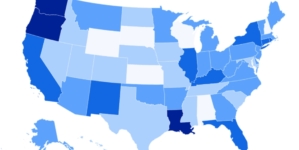-
Real Madrid vs. Juventus Betting Odds, Best Bets: Los Blancos Favored - 15 mins ago
-
Mom tries sneaky airline seat hack, plus Gen Z’s payment habit ‘annoys’ bartenders - 25 mins ago
-
Where is this mother of 2, and what happened to her? - 44 mins ago
-
2025 NASCAR Odds: Shane van Gisbergen Favorite For Chicago Street Race - 50 mins ago
-
Parkinson’s Disease: “Brake” May Halt Cell Death in Some Patients - 54 mins ago
-
Meta AI’s new chatbot raises privacy alarms - about 1 hour ago
-
Where is this mother of 2, and what happened to her? - about 1 hour ago
-
Bucks to Waive Damian Lillard After Agreeing to Deal With Myles Turner - 2 hours ago
-
Texas A&M Announces Major Changes After NCAA Settlement - 2 hours ago
-
High incomes and good work-life balance: See which U.S. cities have the best job markets. - 2 hours ago
Parts of Three States Told to Stay Out of Water Because of Dangerous Waves
National Weather Service (NWS) meteorologists in Alabama, Florida and California are advising residents in some cities to remain out of the ocean because of dangerous conditions.
The Mobile, Alabama, and Tallahassee, Florida, NWS offices issued a coastal hazards message on Thursday morning, with the Los Angeles office issuing one on Wednesday. All three messages warned people of dangerous ocean conditions caused by large waves and rip currents. In 2024, rip currents have claimed the lives of 49 people ranging in age from 8 to 86, according to NWS.
The Alabama warning was issued for coastal parts of Mobile and Baldwin counties in Alabama and the coastal parts of Escambia, Santa Rosa and Okaloosa counties in the Florida panhandle. The Tallahassee-issued warning was in place for Franklin County beaches in the Florida panhandle. The Los Angeles warning was in place for the Catalina and Santa Barbara Islands.
Joe Raedle/Getty
The coastal message will remain in place in California through Thursday afternoon, in Florida through the weekend and in Alabama through Monday night.
“Dangerous swimming and surfing conditions and localized beach erosion. Rip currents can sweep even the best swimmers away from shore into deeper water,” the Mobile alert said.
NWS meteorologist David Reese told Newsweek that the waves are caused by an increased swell from Hurricane Rafael, a Category 2 hurricane churning in the Gulf of Mexico.
“We are seeing an increased swell here in the eastern Gulf of Mexico with the circulation around Rafael being clockwise,” Reese said. “Now that Rafael is moving away from Cuba, a lot of the wind-generated waves and swell are moving up the west coast of Florida.”
Rafael made landfall in Cuba on Wednesday afternoon before exiting into the Gulf.
Each alert warned people, primarily inexperienced swimmers, to stay out of the ocean until calmer conditions presented themselves.
“There is an increased risk for ocean drowning,” the California warning said. “Rip currents can pull swimmers and surfers out to sea. Large breaking waves can cause injury, wash people off beaches and rocks, and capsize small boats near shore.”
Breaking waves as high as 7 feet were impacting the California islands. Similarly sized waves were impacting Mobile beaches, with waves up to 6 feet hitting the Tallahassee forecast region.
“Swim near a lifeguard. If caught in a rip current, relax and float,” the Mobile warning advised. “Don’t swim against the current. If able, swim in a direction following the shoreline. If unable to escape, face the shore and call or wave for help.”
Reese advised any beachgoers to pay attention to beach flags should they venture to the impacted coastal areas over the weekend. A single red flag implies rip currents are present, whereas double red flags mean the beaches are closed.
Source link





























